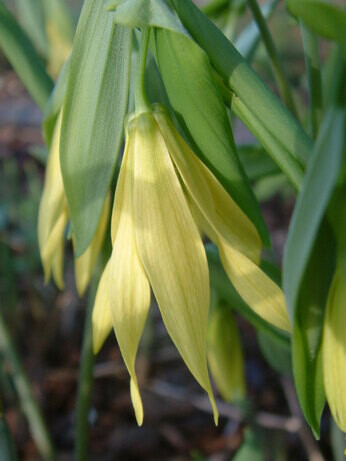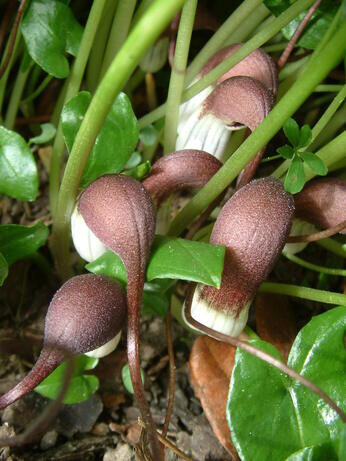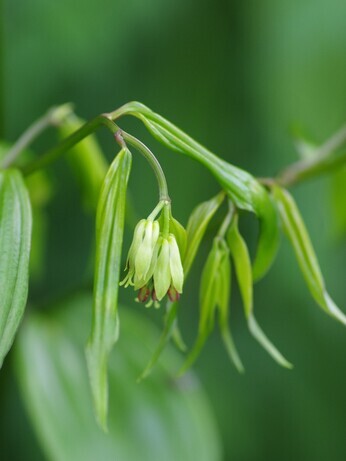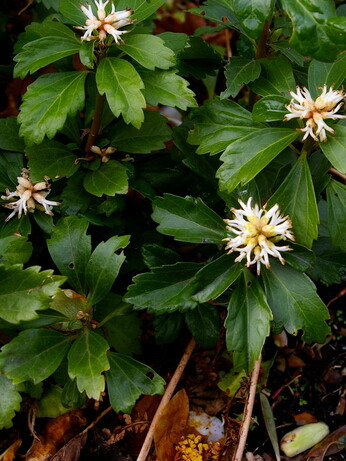Find out what the propagation and garden teams have been up to this week.

Top 10 unusual plants for a shady area
Unusual plants for a shady spot
Beth opened her plant nursery, then named Unusual Plants, in 1967. Her catalogues of plants were divided into sections determined by different growing conditions enabling customers to search for plants specific to the conditions on offer in their own gardens.
Many of the plants propagated and sold at the time were considered unusual but have become more commonplace. Our team are always on the hunt for those unusual plants not so easy to come by, carefully sourcing and propagating them for customers who are searching for something a little different.
Here are some of our less well-known plants suitable for a shady spot:
1. Arisarum proboscideum (mouse plant)- related to arisaema and arum, these are smaller and typically found growing in woodland conditions around the Mediterranean. Heart to arrow-shaped leaves, flowers hidden by a hooded, curved spathe. A. proboscideum, the mouse-tail plant is a cute curiosity.
Arisarum proboscideum
2. Dodecatheon (dark-throat shooting star)- North American plants of damp places ranging from moist valleys in the Prairies, to high mountain meadows of the Rockies and western ranges, even up to the Arctic. Around 30 species, resembling each other but with a range of heights. Colour ranges from white to rose and purple. Their beauty come from the down turned, dart-like flowers, poised on short arching stalks which spring from atop each stem. Basal clumps of smooth, sometimes bronzey coloured foliage are also rather neat.
3. Roscoea- these choice ginger relatives give a touch of the exotic to a lightly shaded spot. Originating in the Himalayas and China, roscoea form fleshy swollen roots (somewhere between orchids and iris) slowly forming clumps of upright foliage, from which open stalkless clusters of orchid-like flowers. Best in a reasonable neutral to acid soil, but which doesn't dry out. The traditional flower colours are purple and cream, but with breeding, the range of cultivated forms has increased along with the colour range.
Roscoea cautleyoides4. Veratrum (white false hellebore)- stately plants demanding a deep moist soil, shade and ample feeding. Long-lived eventually forming clumps of pleated leaves which must be guarded from slugs and snails. Sturdy vertical stems bear numerous spikes of individually small star shaped flowers. The seedheads are an attractive feature well into the autumn.
Veratrum album
5. Kirengeshoma palmata (yellow wax bells)- looks great growing amongst ferns and hostas where the green palette makes the buttery-yellow flowers stand out. Irregular edged, maple-like leaves surround dark purple stems. Happiest growing in a rich, fertile soil in sun or part shade with shelter from the wind.
Kirengeshoma palmata
6. Buglossoides purpurocaerulea (purple gromwell)- produces bright, gentian-blue flowers from April to June which stand out in the woodland garden. This perennial is much more forgiving of its position, growing in most soil types, in sun and part shade.
7. Disporum- another unusual genus well worth growing in a shady bed, woodland, or if in some sun, with a soil which retains more moisture. They are similar to polygonatum and disporopsis, but tend to have larger flowers. The flowers are also similar to uvularia, but they are often on branched stems and so can make a bulkier more dramatic plant.
Disporum bodinieri
8. Phaenosperma globosa (waterfall millet)- a clump forming grass which produces fountain-like, arching stems suspending delicate, bead-like seedheads. Tolerant of most soil types in sun or part shade, this grass will gently seed around.
Phaenosperma globosa
9. Pachysandra (Japanese spurge)- an excellent and indispensable ground-cover plant for tricky shady areas. They will enjoy a moisture-retentive soil, but will tolerate a drier spot. Foliage on low creeping stems, normally glossy, elegantly edged. Flowering occurs early in spring with short, upright spikes of white flowers.
Pachysandra terminalis
10. Uvularia (large merrybells)- from arching stems dangle yellow, bell-shaped flowers with long twisting pointed petals held well above leaves surrounding the lower part of the stem. Flower in mid to late spring. We stock a few varieties of uvularia; some with pale yellow flowers and some with more twisted petals.

Our full range of shade-loving plants can be found HERE.
![]()










Thankyou Teresa